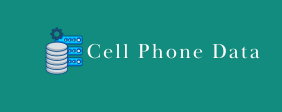In today’s digital landscape, the use of raster and vector graphics plays a crucial role across various industries, from design and marketing to gaming ghost mannequin service entertainment. Raster images, composed of pixels, are ideal for detailed visuals but often face challenges when it comes to scalability and quality retention. Conversely, vector graphics, defined by mathematical paths, offer unparalleled scalability and ease of manipulation. Understanding the strengths of both formats and how they can be effectively combined through raster to vector conversion can significantly enhance visual assets and improve overall design workflows.
Benefits of Integrating Raster and Vector Services
Combining raster and vector services provides a comprehensive approach to graphic design. This integration allows designers to leverage the rich industry-specific templates for email outreach of raster images while benefiting from the scalability and flexibility of vector graphics. For instance, a designer might start with a high-resolution raster image for detailed artwork and then convert it to vector format for use in various applications, such as print, web, or mobile. This dual approach ensures that the final product maintains high quality across different mediums, catering to a wider audience and enhancing brand consistency.
The Conversion Process: Techniques and Best Practices
When transitioning from raster to vector graphics, employing effective techniques is essential for preserving detail and accuracy. Designers can utilize a afghanistan business directory of manual tracing and automated tools to achieve optimal results. Manual tracing offers precision, allowing artists to capture intricate details that automated processes might overlook. On the other hand, tools like Adobe Illustrator’s “Image Trace” feature can speed up the conversion, especially for complex images. Best practices include preparing the raster image by ensuring high resolution, adjusting contrast, and selecting appropriate settings during the conversion process to enhance clarity and maintain artistic integrity.
Applications Across Industries: From Design to Gaming
The combined use of raster and vector graphics has broad applications across various industries. In graphic design, this integration allows for the creation of logos, marketing materials, and illustrations that are visually appealing and adaptable. In the gaming sector, vector graphics enable scalable assets that can be resized for different devices without losing quality, enhancing the gaming experience. Furthermore, in animation, the fluidity of vector graphics allows for smooth transitions and movements, while raster images provide rich backgrounds and textures. This versatility demonstrates the importance of mastering both formats to meet the diverse needs of modern design projects.
